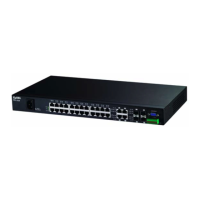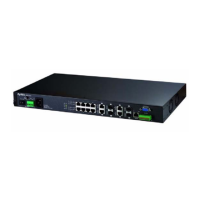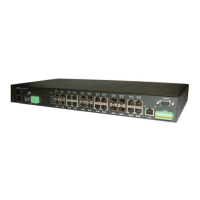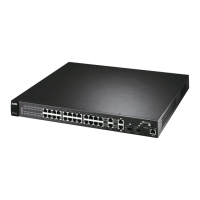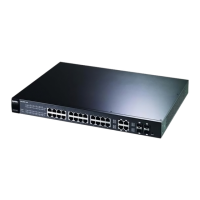Chapter 9 Subscriber Port Setup Screens
Management Switch Card User’s Guide
296
The following table describes the fields in this screen.
Table 135 ENET Port Setup
LABEL DESCRIPTION
Slot Select the number of a line card’s slot. The corresponding subscriber port setup screen for
the type of line card you selected automatically displays.
Port Select the number of a port on the line card.
Load Click Load to display the port’s settings in the fields below.
Enable Select this check box to turn on this port.
Customer
Information
Enter information to identify the subscriber connected to this port. You can use up to 31
printable English keyboard characters (including spaces and hyphens).
TEL Enter information to identify the telephone number of the subscriber connected to this
port. You can use up to 15 English keyboard characters (including spaces and hyphens).
Flow Control Select this check box to turn on flow control on a port. See Section 13.13.2 on page 532
for more on flow control.
Frame Type Select all to have the interface accept all Ethernet frames. Select tag to have the interface
only accept frames with an IEEE 802.1Q VLAN tag.
PVID / Priority Specify the port VLAN ID (1~4094) and IEEE 802.1p priority (0~7) to add to untagged
frames received on this port.
If you configure an ENET PVID setting and enable TLS, the system does not apply the
PVID.
Rate Limit Profile Select a rate limit profile to apply to the subscriber connected to this port. The profile sets
maximum speed settings for traffic coming from or going to the subscriber. See Section
11.26 on page 406 for how to configure a profile.
Queue Rate Limit
Profile
Select a profile of per-queue rate limiting parameters to assign to this port.
Queue Schedule Set the port’s Class of Service (CoS) scheduling method.
Select SPQ to use Strict Priority Queuing to service queues based on the traffic’s IEEE
802.1p priority only. When the highest priority queue empties, traffic on the next highest-
priority queue begins.
Select WRR to use Weighted Round Robin (WRR) scheduling to service queues on a
rotating basis based on their queue weight (the number you configure in the queue weight
fields). Queues with larger weights get more service than queues with smaller weights.
If you select WRR, use the Q0 to Q7 fields to set the priority weight (0~15) of each IEEE
802.1p priority queue. The higher a queue’s weight, the more service it gets.
VLAN Click the Setup button to open a screen where you can configure the VLAN settings for the
port. See Section 9.28.2 on page 299 for more information.
Dot3ad For a port on an Ethernet line card, click the Setup button to open a screen where you can
configure the link aggregation settings for the port. See Section 9.28.3 on page 300 for
more information.
PVLAN Click the Setup button to open a screen where you can configure Protocol VLAN (PVLAN)
settings for the port. See Section 9.8.9 on page 240 for a similar description.
XVLAN Click the Setup
button to open a screen where you can configure VLAN translation settings
for the port. See Section 9.8.10.1 on page 242 for a similar description.
SFP Tx Enable Select this to turn on transmission for the GLC’s SFP slot.
Speed Manually select a speed for the GLC’s SFP slot or use auto to let the system automatically
determine the speed to use.
Apply Click Apply to save the changes in this screen to the system’s volatile memory. The
system loses these changes if it is turned off or loses power, so use the Config Save link
on the navigation panel and then the Save button to save your changes to the non-volatile
memory when you are done configuring.
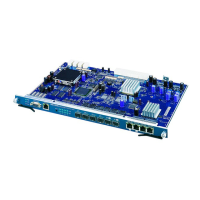
